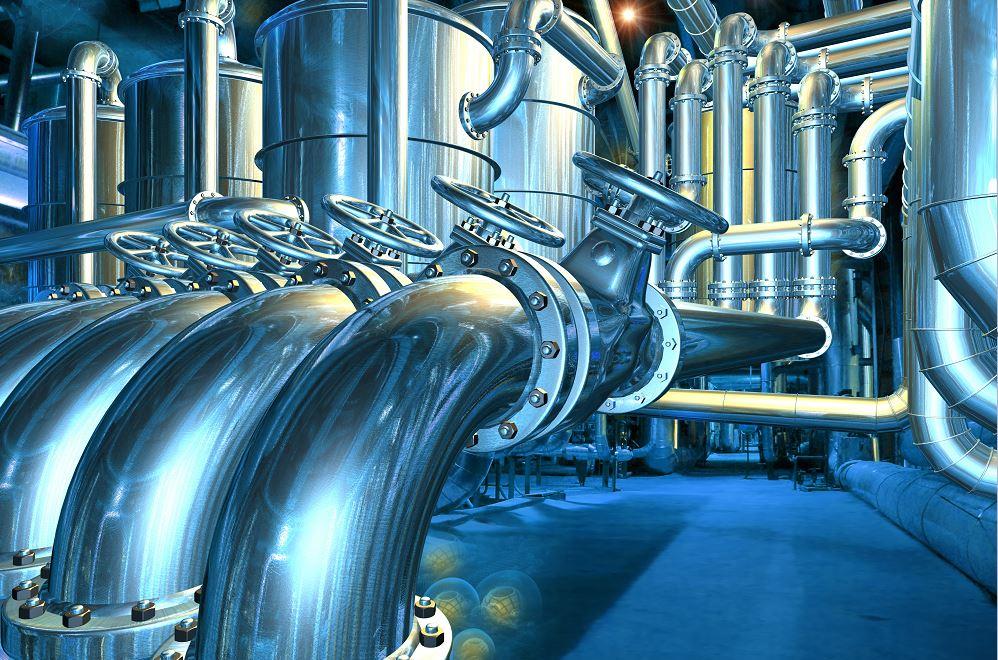Editor
- FMA
- The Fabricator
- FABTECH
- Canadian Metalworking
Categories
- Additive Manufacturing
- Aluminum Welding
- Arc Welding
- Assembly and Joining
- Automation and Robotics
- Bending and Forming
- Consumables
- Cutting and Weld Prep
- Electric Vehicles
- En Español
- Finishing
- Hydroforming
- Laser Cutting
- Laser Welding
- Machining
- Manufacturing Software
- Materials Handling
- Metals/Materials
- Oxyfuel Cutting
- Plasma Cutting
- Power Tools
- Punching and Other Holemaking
- Roll Forming
- Safety
- Sawing
- Shearing
- Shop Management
- Testing and Measuring
- Tube and Pipe Fabrication
- Tube and Pipe Production
- Waterjet Cutting
Industry Directory
Webcasts
Podcasts
FAB 40
Advertise
Subscribe
Account Login
Search
Oil and OCTG continue to grow, though hampered by labor pressures
Demand for line pipe and other oil, gas products has made things very interesting for service centers
- By Lincoln Brunner
- March 28, 2023
- Article
- Tube and Pipe Production
For players in the oil country tubular goods (OCTG) market, watching how petroleum companies are faring and treating their investors is only part of the picture. The real question is, “How much pipe are they using?”
If the past year is any indication, the answer is, “Quite a lot.”
The Preston Pipe & Tube Report in December recorded a 55.5% increase in shipments of energy products (OCTG and line pipe) over December 2021, which itself marked a 48% increase over the previous December. While Preston declined to quote specific tonnages, those increases each represented hundreds of thousands of tons of pipe either shipped from U.S. factories or imported into the U.S. market.
That level of demand for line pipe and other oil and gas products made things very interesting last year for service centers. With mills running full out, distributors had to get creative to meet customers’ needs, said Fadi Samara, line pipe supervisor at Chicago Tube & Iron, Romeoville, Ill.
“There was so much demand last year,” Samara said. “The mill capacity, still to this day, is not completely caught up. Lead times were very extended, more than usual, and really caused an interesting dynamic in the marketplace for a lot of our customer base—or just in general. It’s starting to stabilize now. It's starting to become more consistent, but it’s not back to what it was, I would say, two or three years ago.”
Less Drilling, More Dividends
When oil prices crashed early in the pandemic—West Texas intermediate crude sold for $23.55/bl in March 2020—oil companies couldn’t simply drill their way back to optimal revenues. They had to rethink cash flow—how were they going to generate income with low commodity (and stock) prices?
So, that pandemic-induced redirect went something like this, according to Matt Hagerty, senior manager of energy analysis for Denver-based BTU Analytics, a FactSet company: Rather than plow up to 95% of free cash flow from operations back into capital and exploration, as major oil producers did from 2010 through 2019, those companies curtailed their cap-ex investment to 42% of cash flow in Q3 2022 and instead offered healthy dividends back to their investors.
For example, ExxonMobil recently reported $22.7 billion in cap-ex expenses on $56 billion in revenue for 2022, compared to $26 billion in cap-ex on $21 billion in revenue for 2018.
“There was pressure for returns, but the big catalyst was really the pandemic,” Hagerty said. “So, the pricing crashes, and there’s a whole reshuffle of how you operate, because you can’t just produce everything you want. There needs to be strategic thought in that sense.
“That [shareholder returns] has been the only way that producers have really been able to attract investors back into the space.”
And even with higher sustained oil prices of late—West Texas intermediate crude leapt to more than $106/bl in June 2022 (Brent crude was more than $123/bl a month later) before sliding to $75.95/bl in February of this year—public companies have not rushed to drill new wells.
“When we got into this year, there was a lot of fervor because of the huge runup in pricing to quickly add in production and activity to take advantage of the pricing,” Hagerty said. “But at the same time, all these public producers were holding their cards close to the vest, or they were unwilling to add activity quickly. Public producers are drilling roughly 39% fewer wells than they were before the pandemic, and that’s even with prices hitting $120 this summer.
“Some of the producers that have been able to take advantage are on the private side—they don’t face that same investor pressure.”
That has allowed smaller independent companies to storm back into the field and do what the bigger players won’t right now: explore.
“What they did, early in this time frame, they added a whole lot of rigs to start drilling and drilling and drilling—and actually now, they’re drilling 53% more wells than they did pre-pandemic,” Hagerty said. “So, they’ve actually fully recovered from a drilling standpoint.”
Oil Won’t Die
And while many people are predicting, or even prescribing, the death of hydrocarbons in the near future, nothing could be further from the truth, according to industry analyst Uday Turaga, founder/CEO of ADI Analytics in Houston.
The first consideration Turaga noted is the anticipated growth of emerging markets—the International Monetary Fund projects that India’s economy will grow by 6.1% and China’s by 5.2% this year. The second is historic demand for oil and gas, which hasn’t slowed down (and won’t) by any considerable degree, despite claims to the contrary.
In fact, Turaga said, he sees no alternatives to oil and gas emerging at any significant scale over the next eight years.
“I think it’s plain and simple data,” Turaga said. “If you look at the last 20 years, there has been a lot of discussion about oil demand moderating, declining, and all of that stuff. But if you look at global oil demand, it has been growing at a fairly steady pace—1% to 2%, usually 1.5% or so—every year.
“There was a slowdown during the pandemic, and there was this expectation that … some of the end users of oil have switched over to other sources or there’s a broader shift in consumer demand for oil because there’s a greater share of the population that’s now working from home. With all these trends in the pandemic, there was discussion about how they’d be sticky and have an impact on oil demand. While that is true to a certain extent, overall aggregate oil demand continues to be really robust.”
Domestically, Hagerty pointed out, a few barriers stand in the way of filling that demand easily—notably high diesel prices and the availability of fracking sand, truck drivers, and railroad capacity. Historically low unemployment (the U.S. level dropped from 3.5% in December to 3.4% in January) isn’t helping anyone attract workers.
“When you look at a national economy where the unemployment rate is 3.5%, there’s not a whole lot of leeway to attract workers back into a field that has historically been very boom-and-bust for them,” Hagerty said. “Everything else is just really, really stacking up, so it makes adding frack crews very difficult.
“We don’t expect that there’s going to be a huge overall increase in the number of available fracks,” he said. “We view that this labor constraint is going to persist much through 2023.”
What that will mean for line pipe and other OCTG products exactly, no one knows, but if the pricing outlook is any indication, things seem to be settling down from the pressures of the past year or two, according to Samara.
“Pricing, I think, is in a good spot right now,” Samara said. “I think as the year goes on, we might see it come down a little bit, but it’s still pretty stable. It’s not nearly as high as it was last year. Last year, we saw some pretty unprecedented prices. It’s not what it was a couple of years ago, but it’s still pretty stable.”
About the Author

Lincoln Brunner
2135 Point Blvd.
Elgin, IL 60123
(815)-227-8243
Lincoln Brunner is editor of The Tube & Pipe Journal. This is his second stint at TPJ, where he served as an editor for two years before helping launch thefabricator.com as FMA's first web content manager. After that very rewarding experience, he worked for 17 years as an international journalist and communications director in the nonprofit sector. He is a published author and has written extensively about all facets of the metal fabrication industry.
About the Publication
Related Companies
subscribe now

The Tube and Pipe Journal became the first magazine dedicated to serving the metal tube and pipe industry in 1990. Today, it remains the only North American publication devoted to this industry, and it has become the most trusted source of information for tube and pipe professionals.
start your free subscription- Stay connected from anywhere

Easily access valuable industry resources now with full access to the digital edition of The Fabricator.

Easily access valuable industry resources now with full access to the digital edition of The Welder.

Easily access valuable industry resources now with full access to the digital edition of The Tube and Pipe Journal.
- Podcasting
- Podcast:
- The Fabricator Podcast
- Published:
- 04/16/2024
- Running Time:
- 63:29
In this episode of The Fabricator Podcast, Caleb Chamberlain, co-founder and CEO of OSH Cut, discusses his company’s...
- Trending Articles
Team Industries names director of advanced technology and manufacturing

Orbital tube welding webinar to be held April 23

Chain hoist offers 60-ft. remote control range

Push-feeding saw station cuts nonferrous metals

Corrosion-inhibiting coating can be peeled off after use

- Industry Events
16th Annual Safety Conference
- April 30 - May 1, 2024
- Elgin,
Pipe and Tube Conference
- May 21 - 22, 2024
- Omaha, NE
World-Class Roll Forming Workshop
- June 5 - 6, 2024
- Louisville, KY
Advanced Laser Application Workshop
- June 25 - 27, 2024
- Novi, MI



























